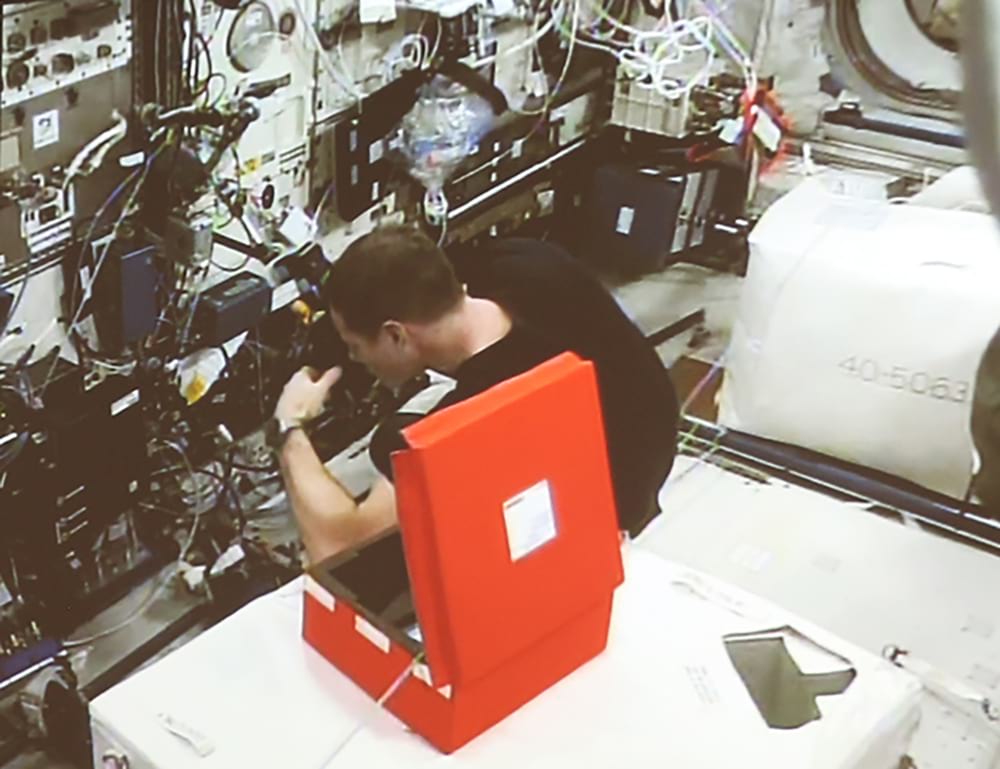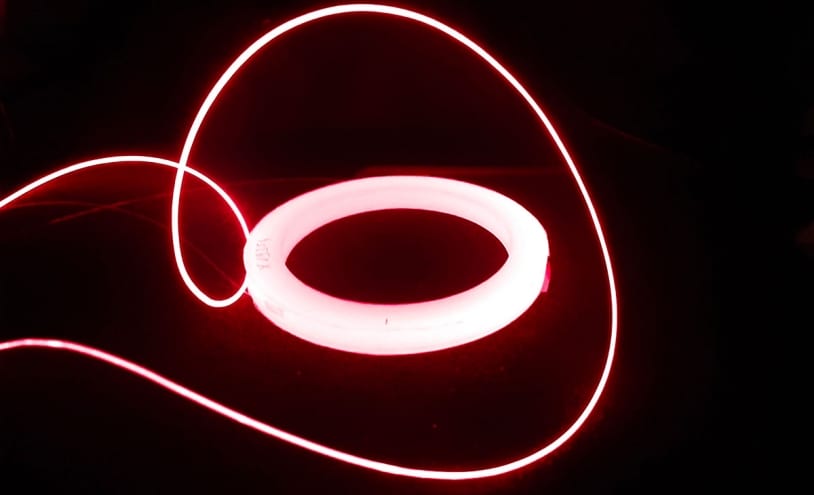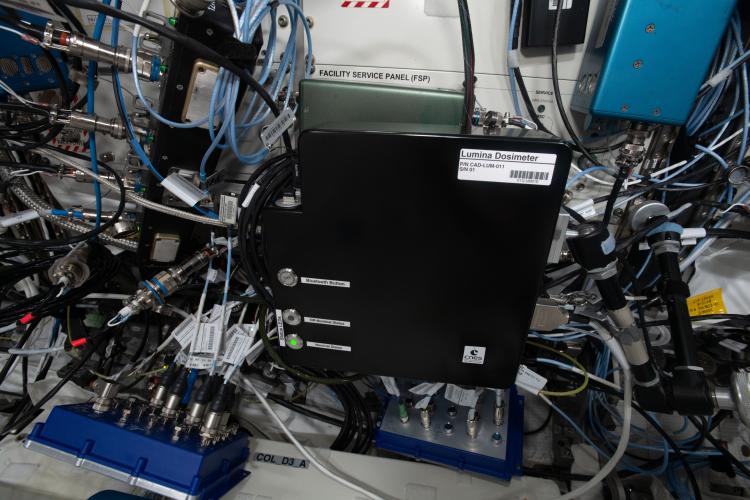This article was originally published on home.cern.
In a spacecraft, in order to protect both crew and electronics from radiation, it is mandatory to invest in effective radiation monitoring systems. The International Space Station (ISS), just like the Large Hadron Collider at CERN, is a complex radiation environment that requires bespoke dosimetry devices. Optical-fibre-based technologies can provide both distributed and point radiation dose measurements with high precision.

On 18 August, ESA astronaut Thomas Pesquet activated the Lumina experiment inside the ISS as part of the ALPHA mission. Developed under the coordination of the French Space Agency, CNES, and with the involvement of CERN, the Laboratoire Hubert Curien at the Université Jean-Monnet-Saint-Étienne, and iXblue, this project uses two several-kilometre-long optical fibres as active dosimeters to measure ionising radiation in the ISS with very high sensitivity.
Daniel Ricci, leader of the Fibre Optics section of the Engineering department at CERN, explains: “When exposed to the space radiative environment, the optical fibres experience a partial loss of transmitted power, which we call radiation-induced attenuation.” Diego Di Francesca, fibre-dosimetry project leader in the team, describes in detail how the dosimeter works: “Using a reference control channel, the radiation-induced attenuation of some special optical fibres can be accurately measured and put in relation with the total ionising dose. The sensitivity of the device is mostly governed by the length of the fibre. Depending on the dosimeter design, the longer the optical fibre dosimeter, the more sensitive it is.”
In order to prevent radiation-induced damage to the electronics inside the accelerators, CERN has been working with radiation sensors based on optical fibres for six years. Building on this experience, CERN has made a technical contribution to Lumina by helping with the theoretical analysis of the optimised architecture of the dosimeters and by carrying out the low- and high-dose irradiation tests needed to calibrate the instrument. Once the experiment is fully installed by Thomas Pesquet, CERN will also contribute to the analysis of the experiment’s ground and flight data during its one to five years of operation.

“A challenge of Lumina is to be sensitive enough to measure low radiation rate variations, considering the shielding provided by the ISS shell. The calibration performed at CERN, on a ground reference model, will enable us to post-process the measurements and will lead to accurate results,” explains Florence Clément, project manager of the Lumina experiment at CNES/CADMOS. “We are convinced that the ISS is only a first step for fibre-optic dosimeters as we venture further into space. As we move away from Earth, the radiation levels increase, and so does the need for reliable dose monitoring.”
By contributing to this experiment, CERN continues to demonstrate its added value for the space sector. “This joint experience in space is an important result of the framework collaboration agreement established between CERN and CNES a few years ago, with special focus on radiation issues,” highlights Enrico Chesta, Aerospace Applications Coordinator in CERN’s Knowledge Transfer group. “To monitor radiation damage to electronics, CERN has developed instruments that can also be used on satellites. In the field of irradiation testing, our unique technical facilities are able to reproduce a variety of environments representative of the most extreme radiation space conditions".
The optical fibre dosimetry activity at CERN is part of the Radiation to Electronics (R2E) project, responsible for ensuring a successful operation of the CERN accelerator complex in view of adverse effects on critical electronic systems exposed to radiation.
For more information:
- Find out more about CERN’s impact on aerospace here.
- Article by CNES: Lumina : Top départ pour la mesure des radiations dans l'ISS (in French).



